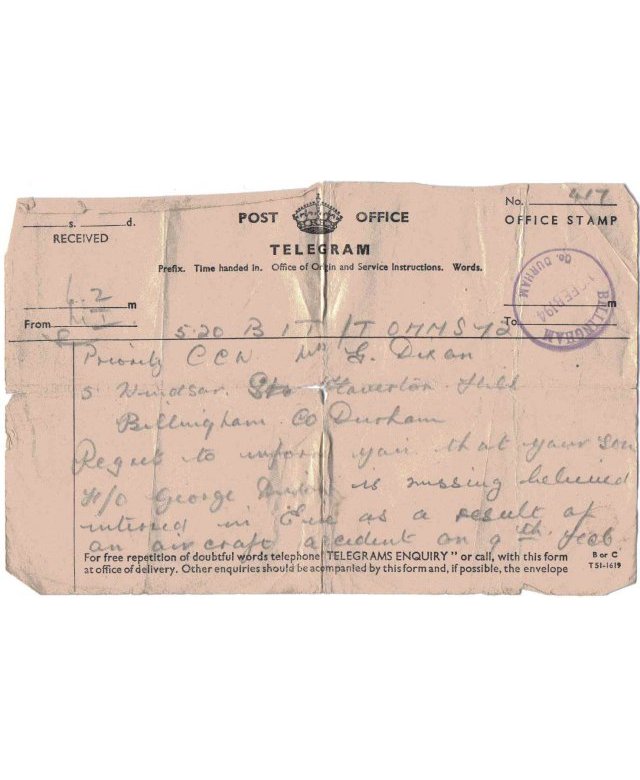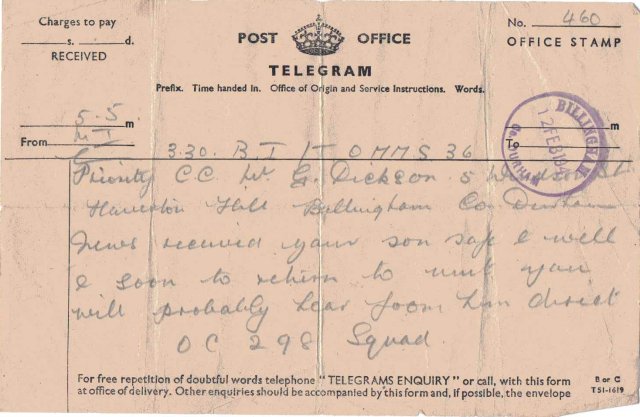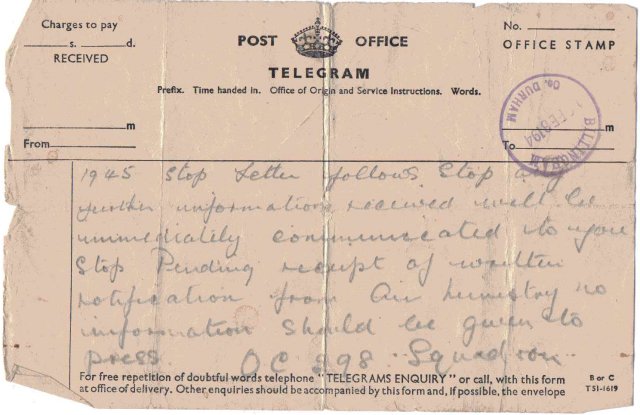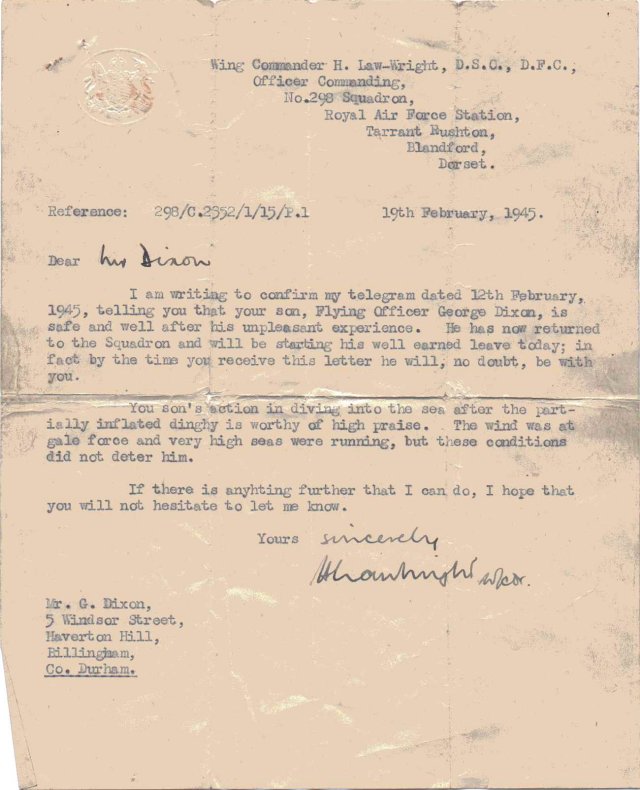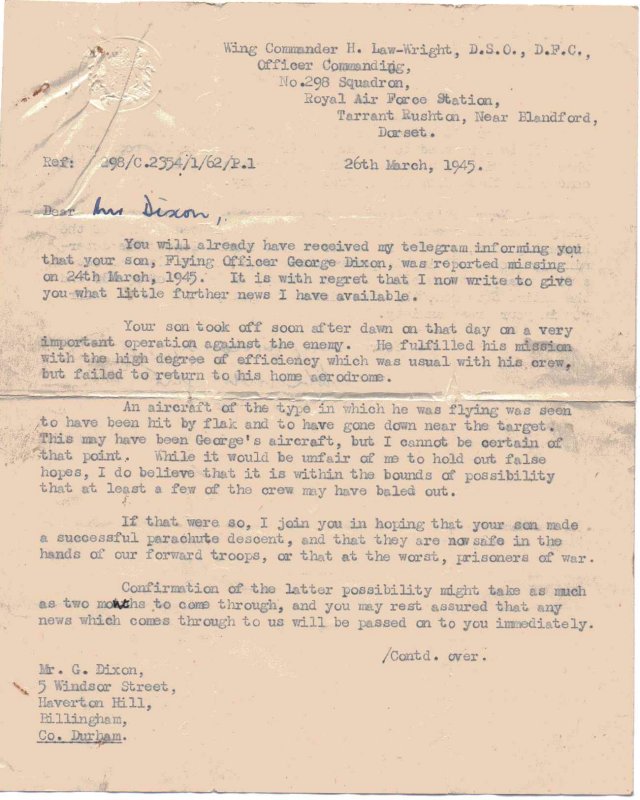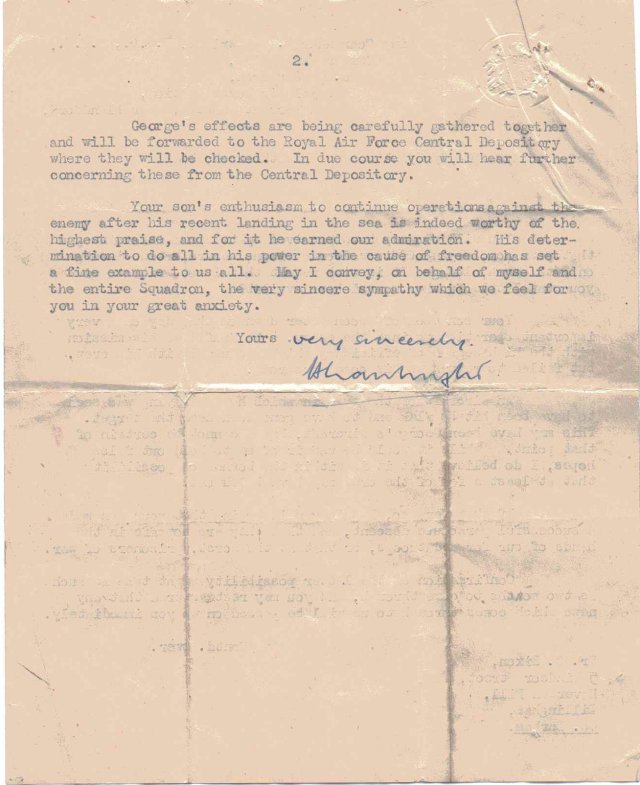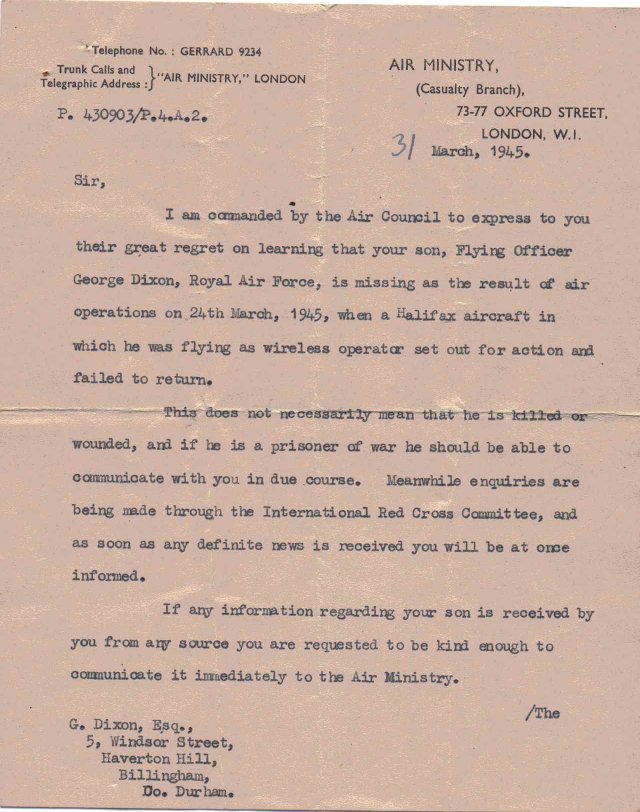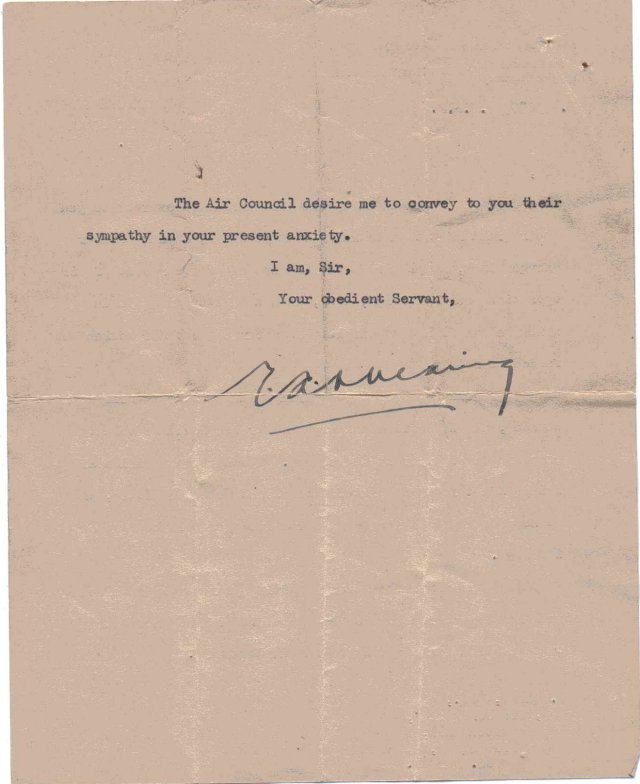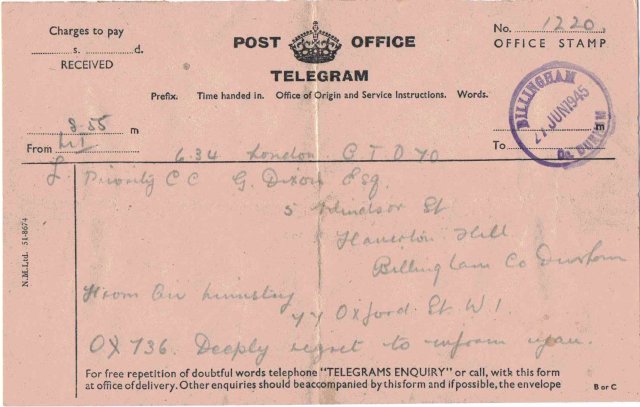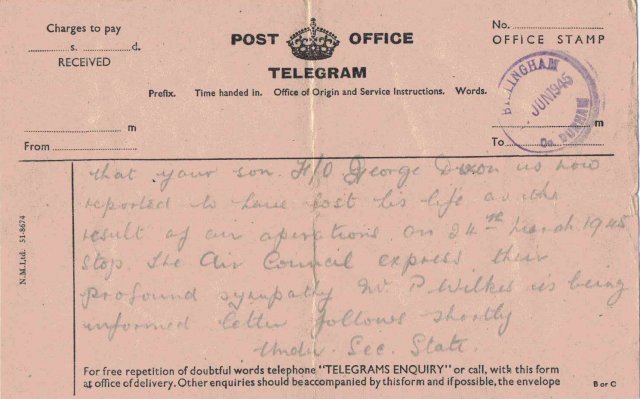Handley-Page Halifax MZ980, 298 Squadron, Donegal 1945
On Friday, 9th February 1945, the experienced crew of Handley Page Halifax MZ980 of 298 Squadron, Royal Air Force, took off from its base at Tarrant Rushton, Dorset. The crew under F/O D R McGillivray of the Royal Canadian Air Force was detailed to undertake a navigation training exercise. They were to fly from their base in Dorset to Rockall, the isolated expanse of rock 270 miles north west of Donegal and return having photographed the rock. Wind conditions however began to play havoc with the planned flight, causing the captain to turn back early on and set new course and 9 hours 50 minutes after take off, having reached Rockall and while attempting to return to base the aircraft became lost and F/O McGillivray was forced to put MZ980 down on the water in Donegal Bay.
Two Irish men were also on duty that afternoon. Privates Herrity and Gilmartin of the Coast Watching Service were stationed in the Look Out Post (LOP) at Mullaghmore looking out onto the wide expanse of Donegal Bay. From around 4pm that afternoon, they and their colleagues in the LOP on St Johns Point across the bay recorded the presence of a British aircraft flying around, changing direction. At 16:19 they recorded the aircraft circling 1 mile North East of their position and that it dropped two red flares. Ten minutes later they observed that the aircraft had crashed one mile east of their LOP and that visibility was very bad. The two members of the Coastwatching Service were later commended for their prompt action in notifying the lifeboat at Killybegs as soon as they noticed the aircraft was ditching. This information comes from the Irish Army archives report on the incident.
On board the stricken MZ980, a successful ditching was carried out but upon getting out of the aircraft it was discovered that the self inflating dinghy had broken away from the aircraft and was not inflated. Three members of the crew swam to the drifting dinghy but could inflate only half of it manually. The sea conditions swept the remaining members of the crew off the aircraft and it was impossible to assist F/Lt Carr and Sgt McKaine. After three hours in the water, the remaining four crew members were rescued by the Killybegs Life Boat at 19:15 and landed safely at Killybegs at 20:30. The sea conditions had been such that local fishermen could not take to the water that day. Also at sea that evening was the British vessel the Robert Hastie, a rescue ship based in Killybegs for the war. It was however the Killybegs RNLI lifeboat which effected the rescue of the four crew members of MZ980. They were taken to Rogers Hotel in Killybegs town. They were accommodated over night at the hotel it seems and on the following day, they were brought to the border with Northern Ireland and handed over to the authorities there.
On the following day the remains of Sgt McKaine was washed ashore near Rossnowlagh, while F/O Carr's body was found near Mountcharles on the Donegal Coast on February 12th.
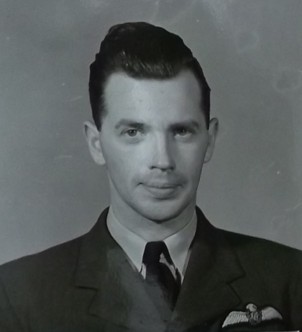 |
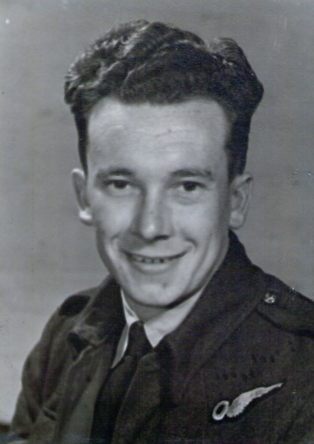 |
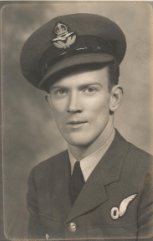 |
|
F/O Delmer Ronald McGillivray J/24978,Pilot, RCAF KIA 24th March 1945 when Halifax NA311 was shot down during Operation Varsity. Son of Clara G and Donald H McGillivray of Vancouver. |
F/Sgt James Beedham Walker 1541521, Navigator; KIA 24th March 1945 when Halifax NA311 was shot down during Operation Varsity. Son of James and Beatrice A. Walker, of Hull; husband of Joyce Walker |
F/Lt John Carr J/21035, Air Bomber + RCAF KOAS, 24th February 1945 in the ditching of MZ980. Son of George and Norah M. Carr of Vancouver; husband of Gladys E. Carr, of Barons, Alberta, Canada. D.C John Carr is buried in Irvinestown Church of Ireland Cemetery, Polt 2, Grave 63. |
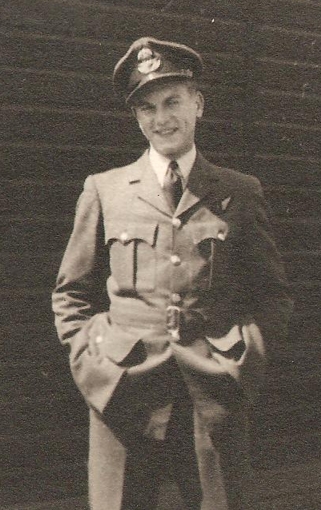 |
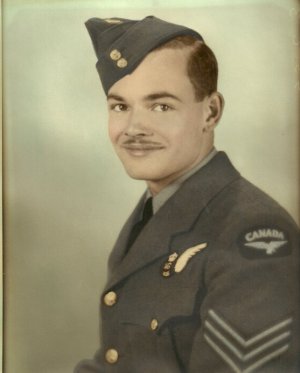 |
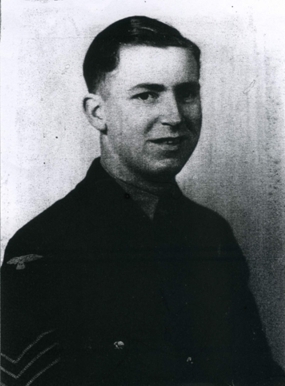 |
|
F/O George Dixon 157924, Wireless Operator/Air Gunner (WOp/AG); KIA 24th March 1945 when Halifax NA311 was shot down during Operation Varsity. Son of George Edward and Frances Elizabeth Dixon, of Haverton Hill, Billingham, Co. Durham |
W/O James Ewart Bunn R/203548, Air Gunner; RCAF KIA 24th March 1945 when Halifax NA311 was shot down during Operation Varsity. Son of Mabel and Donald N Bunn, Broadview, Sask, Canada. Husband of Mrs. J E Bunn, London. |
Sgt John Alan McKaine 1892951, Flight Engineer; KOAS 9th February 1945 in the ditching of Halifax MZ980. Son of John and Margaret Hird McKaine, of Guildford. Sgt McKaine was laid to rest in Guildford Cemetery. |
The survivors of MZ980 no doubt were returned to their Squadron at Tarrant Rushton as soon as possible. The service files of Bunn and McGillivray show that both received seven days leave dated the 21 February, 1945. This is titled as "Survivors leave" on McGillivray's file. On the 15 March James E Bunn was married to Hughena M MacKay at Blanchford, Dorset, close to the air base. Hughena was a member of the Womens Auxiliary Air Force and was based at Tarrant Rushton.
In the few weeks after the ditching of Halifax MZ980, the authorities at Tarrant Rushton held an investigation into the loss of the aircraft and the deaths of the two crew members. The results of these investigations were published in official records which were found in the service files of John Carr. One of the records is a detailed Form 412 Court of Inquiry document that contains a useful summary of the evidence accepted by the inquiry. This is presented below.
Form 412, Court of Inquiry into the loss of Halifax MZ980 of
298 Squadron, 38 Group, RAF.
An extract transcription of Paragraph 10. Conclusions from Form
412
(a) At 0706 hours, F/O
McGillivray and crew took off to fly on a navigational
exercise to Rocall (sic) and return. The take off was
1 hour. 26 mins. later than planned.
Low cloud over the Welsh hills forced them to turn back,
circle, climb to 10,000 feet and set course anew, wasting 40
Mins. The remainder of the flight, to Rockall was carried out
as planned except that the navigator that the wind had backed
and increased considerably. Rockall was reached on E.T.A.,
photographed, course was set on return, and the E.T.A. Base
and PLE was signaled to Tarrant Rushton. Course was altered
for the Mull of Kintyre and, on instructions from Base, the
Captain decided to land at Silloth. Land was sighted at 1510
hours., in bad weather and the decision was made to follow the
coast to starboard until the position was verified. Radar and
W/T aids proved in effective and the aircraft was forced lower
by cloud and icing. The Captain eventually decided, with 30 to
40 Mins. petrol left, that he could not make an aerodrome and
decided to ditch.
A sucessful ditching was carried out in Donegal Bay at 1615
hours.
After ditching, all the crew suceeded in escaping from the
aircraft to find that the dinghy has broken adrift in a very
heavy sea and was not inflated.
Three members of the crew jumped into the water, reached the
dinghy and inflated one half with teh bellows. The other half
would not inflate.
The Captain was later washed overboard and reached the dinghy.
The Air Bomber and the Flight Engineer were afterwards seen in
the water but could not reach the dinghy. Four members of the
crew were rescued by a fishing boat at 1915 hours, and taken
ashore. Sgt. McKaines' body was washed ashore on 11th
February. The dinghy was not salved.
THE AIRCRAFT WAS DITCHED IN DONEGAL BAY AND TWO MEMBERS OF THE
CREW WERE LOST DUE TO THE FOLLOWING CAUSES:-
(b) (i) PETROL SHORTAGE. Although the aircraft took
off with sufficient petrol for 9 hours plus 10% safety margin,
a change of wind extended the time of the fligth considerably.
(ii)NAVIGATION ERROR.When land was sighted, the
position of the aircraft was not identified by the crew. The
aircraft was followed the coast to starboard for an hour when
DR should have proved this impossible.
(iii)BAD WEATHER.Which prevented the aircraft flying
over land and prevented signals communication.
(iv)UNSERVICEABILITY OF DINGHY.The dinghy was not
properly inflated on discharge from the stowage. One half of
teh dinghy could not be inflated by use of the bellows.
(v)INACCESIBILITY OF DINGHY. The dinghy painter broke
away in the high seas and the dingy drifted away.
(vi)HEAVY SEAS.two members of the crew were prevented
from staying on the aircraft by the heavy seas and are
presumed to have been washed overboard.
One other aircraft undertaking the same exercise that day did make a sucessful landing at Silloth airfield, in Cumbria in Northern England.
Eleven days after his wedding, James Bunn along with McGillivray, Dixon and Walker took off from the airfield at Woodbridge as part of the aerial armada carrying the 6th Airborne Division into Germany. Their aircraft, Halifax NA311, had two new crew members, F/Sgt Augustine Aherne and F/O Edwin M Hales. They were towing one of the large Hamilcar gliders for the invasion.
Shortly after they released their glider, Halifax NA311 was hit by German anti aircraft fire and the aircraft was seen to roll onto its back before crashing. And so, the four survivors of the ditching off Donegal of Halifax MZ980 met their tragic end in the skies over Germany. In the immediate aftermath of the crash and the fighting, the airmen's remains were buried by British forces passing through the area. It would be 1948 before the bodies were finally accounted for from a local cemetery and from isolated burials in the countryside. All six bodies were buried in a collective grave in the Reichswald Forrest War Cemetery in 1949.
The photo below showing all six members of MZ980's crew was kindly provided by the McKaine and Carr families. John McKaine's brother Eric was also an RAF airman at this time, flying with 221 Squadron on Wellington aircraft in the Mediterranean. He was not informed of his brothers death until some days after the event. The photo shows the men standing in front of a Halifax aircraft, and on the right hand landing gear assembly, one can see the stencil painted letter 8A, the Squadron code for 298 Squadron. One can see clearly the immense size of the Halifax aircraft.
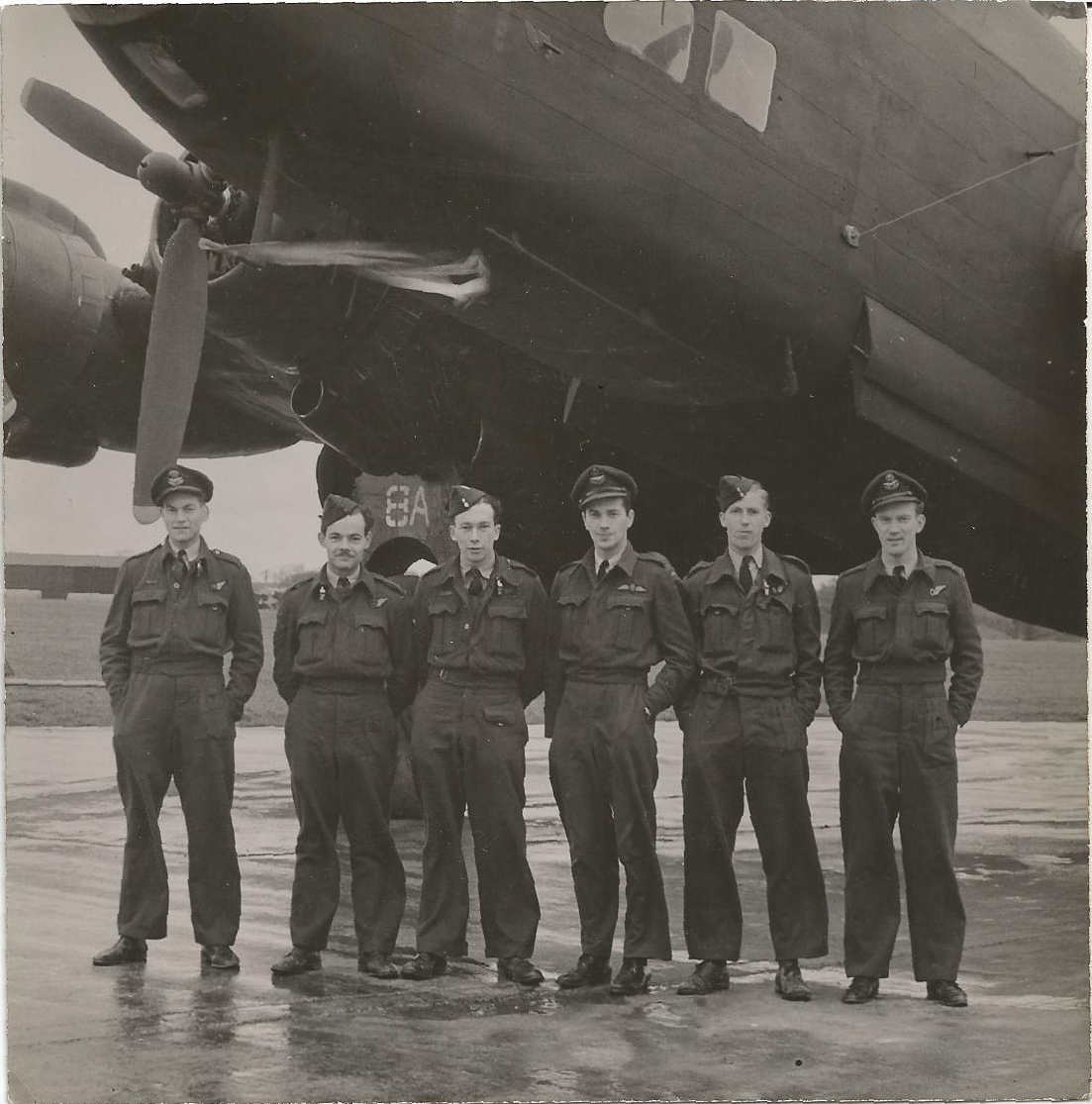
The crew from left to right were recorded by the McKaine family as Dixon, Bunn, Walker, McGillivray (note pilots wings on chest), McKaine and Carr.
The bodies of F/O McGillivray, F/O Dixon, W/O Bunn and F/Sgt
Walker are all buried in the Reichswald Forrest War Cemetery
maintained by the Commonwealth War Graves Commission.
The Crew of Halifax MZ980
The crew of the unfortunate Halifax consisted of six airman from Canada and the United Kingdom. They were all members of the Royal Air Forces number 298 Squadron. 298 Squadron was formed as a support squadron for the newly formed Airborne forces of the British Army in 1942. After disbanding in 1942, it was again reformed in November 1943. A potted history of the unit is provided on the website of Bruno Lecaplain - Royal Air Force WWII 38 Group Squadrons. There you can also get a feel for the kind of tasks that were assigned to the units of 38 Group.
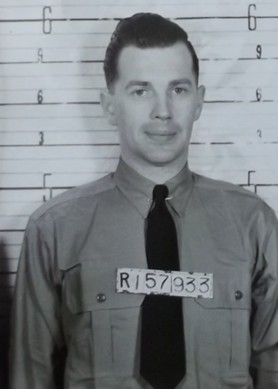
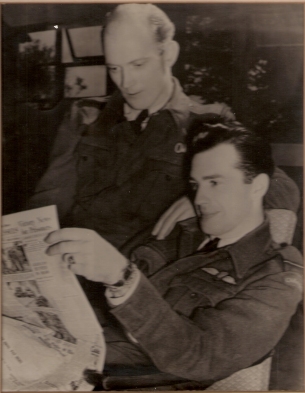 Delmer 'Ron' McGillivray was born in
Hatzic, British Colombia in 1916. His Royal Canadian Air Force
attestation papers dated 20th February 1942 say that he was
working at that time as a dry kiln foreman at the Seaside Lumber
company in Vancouver. On his papers he listed that he could play
the trumpet and saxophone. His service began in March 1942 and
he progressed from basic training then to flight training at
numbers 4 Elementary Flying Training School (EFTS) and 6 Service
Flying Training School (SFTS). He was posted in April 1943 to
No. 1 General Reconnaissance School on Prince Edward Island.
Following this he shipped out for England arriving at the end of
July 1943. Upon arrival he was sent to number 14 (Pilots)
Advanced Flying Unit at Banff in Scotland and in turn again to
the satellite airfield at Dallachy. Here he would have learned
to fly in the more crowded and weather beaten skies of wartime
Britain. Like the other CAnadians he was posted in turn to 81
OTU and 1665 Heavy Conversion Unit. He and the others were
posted to 298 Squadron on D-Day, June 6th, 1944. His log
book records many varied missions including some to occupied
Norway and France. He also flew bombing missions,
including one on the day before the ditching.
Delmer 'Ron' McGillivray was born in
Hatzic, British Colombia in 1916. His Royal Canadian Air Force
attestation papers dated 20th February 1942 say that he was
working at that time as a dry kiln foreman at the Seaside Lumber
company in Vancouver. On his papers he listed that he could play
the trumpet and saxophone. His service began in March 1942 and
he progressed from basic training then to flight training at
numbers 4 Elementary Flying Training School (EFTS) and 6 Service
Flying Training School (SFTS). He was posted in April 1943 to
No. 1 General Reconnaissance School on Prince Edward Island.
Following this he shipped out for England arriving at the end of
July 1943. Upon arrival he was sent to number 14 (Pilots)
Advanced Flying Unit at Banff in Scotland and in turn again to
the satellite airfield at Dallachy. Here he would have learned
to fly in the more crowded and weather beaten skies of wartime
Britain. Like the other CAnadians he was posted in turn to 81
OTU and 1665 Heavy Conversion Unit. He and the others were
posted to 298 Squadron on D-Day, June 6th, 1944. His log
book records many varied missions including some to occupied
Norway and France. He also flew bombing missions,
including one on the day before the ditching.
At the time of his death, Ron had been engaged to Vivian
Williams. Vivian gave birth to a daughter in December 1945 and
gave the child up for adoption. Ron's niece was able to provide
the photo at left of Ron along with John Carr.
Ron's flying log book records the February 9th crash and the
sad record of his friends death.

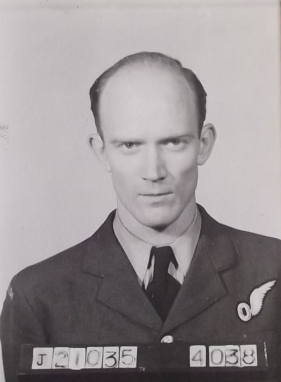 John "Doc "Carr was born in 1917 in
Birkenhead, England. His parents, Norah May and George Carr
moved to Canada around 1920, John and his mother arriving in
Canada on the SS Minnedosa on 30 July 1920. The family returned
for a sort time to England in 1929. John does not appear to have
had any siblings. His enlistment papers show that he had
understaken Chiropractic studies in Los Angles between 1939 and
1941. He enlisted at the end of December 1941 and his training
began in January 1942. He was posted to a nunber of training
establishments in Canada, including 5 Bombing and Gunnery School
(BGS) at Dafoe and 4 Air Observers School at London, Ontario. He
was commishioned as a Pilot Officer on the 20 November 1942, at
the same time receiving his Air Bombers badge. Following this he
completed a further posting at 8 BGS at Lethbridge, Alberta. It
was here that he likely met and married his wife, Gladys Ethel
Larson. No more than two months later he embarked for England,
never to return. He was posted to No. 4 (Observers) Advanced
Flying Unit at West Freugh in Scotland. Spending just over a
month at West Freugh, he then found himself with 81 OTU as
described below.
John "Doc "Carr was born in 1917 in
Birkenhead, England. His parents, Norah May and George Carr
moved to Canada around 1920, John and his mother arriving in
Canada on the SS Minnedosa on 30 July 1920. The family returned
for a sort time to England in 1929. John does not appear to have
had any siblings. His enlistment papers show that he had
understaken Chiropractic studies in Los Angles between 1939 and
1941. He enlisted at the end of December 1941 and his training
began in January 1942. He was posted to a nunber of training
establishments in Canada, including 5 Bombing and Gunnery School
(BGS) at Dafoe and 4 Air Observers School at London, Ontario. He
was commishioned as a Pilot Officer on the 20 November 1942, at
the same time receiving his Air Bombers badge. Following this he
completed a further posting at 8 BGS at Lethbridge, Alberta. It
was here that he likely met and married his wife, Gladys Ethel
Larson. No more than two months later he embarked for England,
never to return. He was posted to No. 4 (Observers) Advanced
Flying Unit at West Freugh in Scotland. Spending just over a
month at West Freugh, he then found himself with 81 OTU as
described below.
James Ewart Bunn was born to Mabel and Donald Norman Bunn in Broadview, Saskatchewan in November 1924. At age 18, he enlisted in the RCAF in May 1942. He was at that time serving with a reserve field artillary regiment in his native Broadview. He was employed on his fathers farm. His training as a an air gunner seen him posted to among other units, 3 Wireless School, 9 Pre-Aircrew Education Detachment, 1 Air Gunner Ground Training School followed by 9 BGS. He embarked for England in October 1943 and upon arrival was posted direct to 81 OTU at Tilstock.
James Bunn's son Jim, visited the Halifax Bomber at the Air Museum in Trenton Ontario Canada. He provided these photos of the aircraft there. As he understands it, his father was a rear gunner. Click on the left or right of the images to scroll to next image.
Less is known about the three Royal Air Force men on the aircraft due simply to the cost and difficulty of obtaining useful records from the RAF. Letters sent to local papers in Hull and Billingham did find very helpful family members and neighbors of George Dixon and a kind researcher in Hull who provided a newspaper clipping of James Walker.
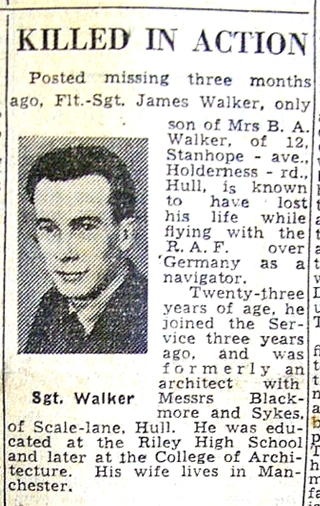 A
newspaper paper clipping kindly provided by Malcolm Mann of
Hull, a local researcher of Hull's war dead. James Walker's
cousin Geoff provided this bio for James: James Beedham Walker was born at 174, Mersey St. Hull in 1920.
(Beedham was the maiden name of his mother.) He attended the
Mersey Street School until he was 13 years old and went from
there to Hull Technical College for a further 2 years. When
he was 13 years old, in 1933, he moved home, with his
parents, to 12, Stanhope Ave., Holderness Rd., Hull
A
newspaper paper clipping kindly provided by Malcolm Mann of
Hull, a local researcher of Hull's war dead. James Walker's
cousin Geoff provided this bio for James: James Beedham Walker was born at 174, Mersey St. Hull in 1920.
(Beedham was the maiden name of his mother.) He attended the
Mersey Street School until he was 13 years old and went from
there to Hull Technical College for a further 2 years. When
he was 13 years old, in 1933, he moved home, with his
parents, to 12, Stanhope Ave., Holderness Rd., Hull
He became an apprentice architect. He studied at evening classes until the end of his apprenticeship when he attained the age of 21 years. His evening studies brought him the reward of becoming a Fellow of the Royal Institute of British Architects (F.R.I.B.A). When he was 18 years old he was excused call up into the services in order to complete this qualification.
He was called up at 21 years old and he was posted to Port Elizabeth, South Africa, for part of his Aircrew training.
The Walker family provided the above copy of the order of service from a 1948 memorial service held by The Royal Institute of British Architects in memory of members who had died in the war. Click on the image to see the second page.
Next posting for the Canadians and presumably Walker and Dixon also, was to 81 Operational Training Unit (OTU) where they would have been introduced to the AW Whitley bombers for training on large multi engined aircraft. It is there most likely that the crew would have met for the first time. The service files of the three Canadians show their arrival at 81 OTU on or around the 8 November 1943. Having done this stage of training, the next step was with 1665 Heavy Conversion Unit where they would have learned to flying and co-operate as a crew on the large four engined Halifax bomber. It was here that McKaine would likely have joined the crew, as flight engineers were not carried on the smaller twin engine bombers. During their time at 81 OTU, this establishment was transferred to the RAF's 38 Group which was part of Transport Command. They would thus fly the large bomber in a heavy glider tug and supply dropping role rather than as a bomber command crew.
The date of posting of all three Canadians to RAF 298 Squadron was 6 June 1944, the date of the D Day landings. Their records do not explain if they were involved in the invasion actions but one can imagine that they certainly took part in follow up supply drops and possibly later in action at the Battle for Arnhem in Holland.
George Dixon's kind niece, Maureen, provided some
extremely interesting scans and telegrams received by his family
and also a note book he kept full of rather cryptic notes. As he
was a radio operator it is thought that these were notes taken
during training on the radio equipment. These documents are
presented below.
You can view the the files by clicking on the left or right hand
side of the image to move to the next image. The letters start
with the welcome news that their son was safe after the Irish
ditching event but one can only imagine the grief that came with
the ensuing telegrams and letters.
Halifax MZ980 was delivered to the RAF during the autumn of 1944. It was part of a batch of aircraft built by Rootes Securities at their factory at Speke. The production of the Halifax during the war had been subcontracted out from the designer Handley-Page to a number of other companies including Rootes. MZ980 was a Halifax III subvarient, this being a the version powered by four of the Bristol Hercules XVI radial engine. The Halifax III was 71 Ft. 7 in (21.8 m) in lenght and had a wingspan of 104 ft. (31.7 m) in some production variants.
The map below is not to scale in showing the position of
Rockall. Rockall is much farther out into the Atlantic but is
llustrative.
Create a Map
with StepMap
Sources Irish Army Archives Files, Cahal Brugha Barracks.; The RCAF Service files of J CARR, D R MCGILLIVRAY, J E BUNN, received from the Library and Archives Canada.; http://www.raf38group.org/298squadron">Royal Air Force WWII 38 Group Squadrons; The kind help of E. McKaine, Jim Ellis, Wes Selman, Mauren Young, Peter Dent, Anne and Geoff Walker, Malcolm Mann and David Champion.
Compiled by Dennis Burke, 2012, Dublin and Sligo. If you have information on any of the people listed above, please do contact me at dp_burke@yahoo.com



